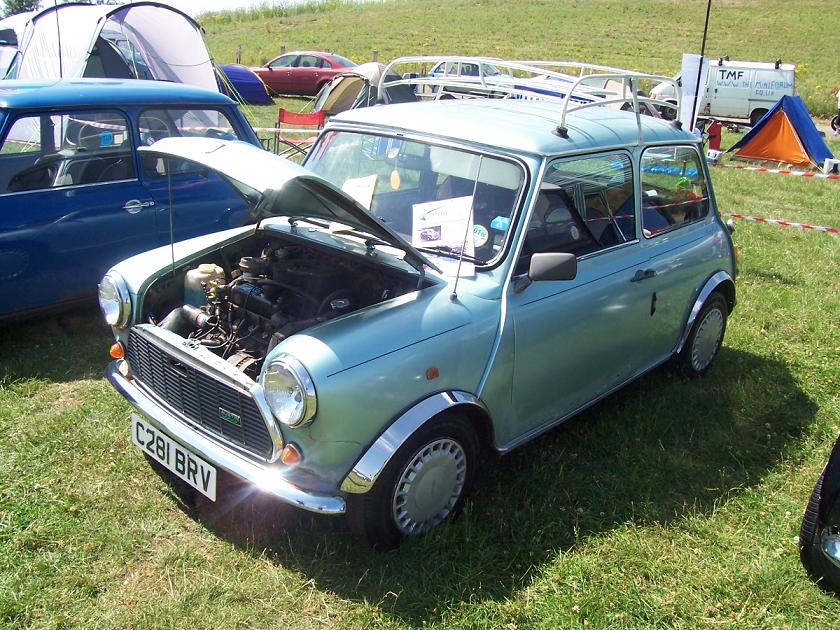First of all, what are they? Why does an engine need them?
Secondly, what should you do if they have rotted through?

Core plugs....
Started by
Jammy
, Jun 08 2005 10:51 AM
9 replies to this topic
#1

Posted 08 June 2005 - 10:51 AM
#2

Posted 08 June 2005 - 11:06 AM
core plugs block the water gallery holes, i dont know much more about them, i suppose that they allow the cooling system to be drained from the block? any more knowledgeable people will be able to give a better description
#3

Posted 08 June 2005 - 11:58 AM
Core/Freeze plugs are a manufacturing necessity. The block is "cast" and all those internal passages are created by a type of pre-form made of bonded sand. This bonded sand pre-form is called a "core". Once the block is cast, the sand from the core has to be removed... otherwise you don't have a cooling jacket. Machined holes are created on the side of the block where the cores were extracted. The core plugs get pounded into these machined holes to seal the water jacket.
I've never seen core plugs rot away but they do sometimes fail and they are almost always replaced as part of a rebuild. Removing them prior to having major engine work performed allows the block to be "hot-tanked" where it is dipped in caustic to remove all traces of grease, oil, and rust. This is beneficial not only for the oily parts of the engine but the water jacket as well.
To put core plugs back in, I typically take a piece of thin cardboard and stuff it into the recess of the plug. Then I find a large socket that will fit inside the recess and place it over the cardboard. After cleaning and drying both the plug and hole in the block, I coat the OD of the plug with a thin film of gasket sealant and use a hammer to tap on the socket and drive the plug into the block (flush).
I've never seen core plugs rot away but they do sometimes fail and they are almost always replaced as part of a rebuild. Removing them prior to having major engine work performed allows the block to be "hot-tanked" where it is dipped in caustic to remove all traces of grease, oil, and rust. This is beneficial not only for the oily parts of the engine but the water jacket as well.
To put core plugs back in, I typically take a piece of thin cardboard and stuff it into the recess of the plug. Then I find a large socket that will fit inside the recess and place it over the cardboard. After cleaning and drying both the plug and hole in the block, I coat the OD of the plug with a thin film of gasket sealant and use a hammer to tap on the socket and drive the plug into the block (flush).
#4

Posted 08 June 2005 - 12:56 PM
I've had a core plug rot out before. Punch a hole in it then they can be prized out with a large screwdriver or similar, and a new one pressed in as described by dklawson.
They are also fitted to allow freezing water to escape, should it get that cold. Basically freezing water expands so if it froze really badly there would be a risk of the block cracking. In theory the core plugs should be forced out before this occurs.
Phil.
They are also fitted to allow freezing water to escape, should it get that cold. Basically freezing water expands so if it froze really badly there would be a risk of the block cracking. In theory the core plugs should be forced out before this occurs.
Phil.
#5

Posted 08 June 2005 - 01:16 PM
and they are simple to fit with just a socket by tapping them in with a hammer. Iv also had one rot and spring a leak
#6

Posted 08 June 2005 - 02:23 PM
Also , dont forget to get the ones applicable to you engine, A series are different to A+ and 1275, I also think there is a different number between 998 and 1275.
But other than that.. as above..
But other than that.. as above..
#7

Posted 08 June 2005 - 02:48 PM
Ok cool, might not have to do it yet, its just a mini I'm going to look at 2mo night, the guy said the core plugs had rotted! Will let you know the outcome soon!!
#8

Posted 08 June 2005 - 07:05 PM
As Guessworks said, the A series and very early A+ motors have domed plugs rather than the traditional type of core plugs. These are fitted differently in that you just lay it into the hole and smack it flat. It starts off domed then as you pelt it it flattens out which increases it's diameter a little. And there are different sizes and numbers of plugs for different engines.
#9

Posted 06 July 2005 - 09:50 AM
this topic has been very helpful since i seem to have blown a core plug yesterday. had a minor problem with the car that panicked me... so got in touch with Guessworks and he explained to me the problem. I did try my best to tell him hte problem I had. It wasn't very technical on my part (water coming out of a round thing on the front of engine under where the new head gasket went on).
will get it sorted right away.
will get it sorted right away.
Attached Files
#10

Posted 06 July 2005 - 09:57 AM
slighty better pic
Attached Files
1 user(s) are reading this topic
0 members, 1 guests, 0 anonymous users





















